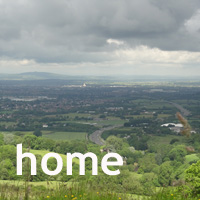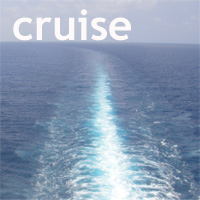Ah Russia.
 Sunday, September 18, 2016 at 8:13AM
Sunday, September 18, 2016 at 8:13AM
So beautiful. So different. so infuriating.
We were first here in 1986, during the early days of Perestroika, when turning over two pages in the British Airways Holiday brochure tempted us with a tour of the Caucasus in preference to the weekend in Prague we were intending to research. We began our adventure in what was then Leningrad USSR, during the White Nights and found the city captivating. Well, those parts we were allowed to see, that is. We’ve been here again since then and though we were interested to return, unlike the majority of our fellow travellers, this wasn’t necessary the highlight of our adventure.
But as soon as we’d seen where we were to stay for the next three days, right in the centre of the city, the old excitement returned and we looked forward to getting out and about.
First of all, we had to complete the formalities. Just like India, Russia does them so very well. Not only did we need our ship id and passport, we needed our Russian immigration form. We’re travelling without a visa, as part of a group, so need to do as we are told and stick with the plan. Each time we go out or come back in, we have to do the old face to face checks and oh my, does this take time! Still, I managed a slight smile from the stern customs officer when I spoke one of the two Russian words I remembered: Spasibo! She looked up from her computer and reminded me by replying with the other one: Pashalsta!
So we joined our group, were issued with earpieces so we could follow her commentary and whilst on the bus, we listened to her instructions. Were we wearing a heavy coat? If so, better take it off and leave it on the bus, because no coats were allowed inside and the cloakroom would be needed. If one person wore a coat, then the whole group would have to wait for the cloakroom and we really didn’t want that…better take our jackets off then. (No pressure!)
Who has a large bag or rucksack? No bags are allowed inside and you will have to leave them on the bus. Remember, we have to carry passports and suchlike with us? There was a general muttering about not wanting to leave such things behind. At that point, one of the guides held her capacious handbag up to show us the maximum size allowed: thankfully, it was larger than my shoulder bag. Phew. Is that it?
No!
Who has a camera? Then you will need a permit. Just as we were wondering if it was all worth it, she came around and handed stickers out. At least that was easy!
I ought to have said, we were visiting the Yusupov Palace to begin with. We knew nothing about the place except for one, important detail: this is where Rasputin was killed. As we entered, a woman from the palace surveyed our bags and coats, pointing out one of our party who was pushing the limits rather with a “jacket”. She let us in though, and I guess we got away with that one.
We began our visit in a series of elegant reception rooms, following closely behind Inna, our guide, and listening to her commentary on our earpieces. As we progressed through the rooms she gave us a little background to the Yusupov family and set the scene for that fateful night.
Her stories were well illustrated by family photographs on the walls, though with all the labels in Cyrillic script, I’m sorry that I couldn’t read them, even if I could make an educated guess.
Rather than go into detail about the events of that night (which you can read here) I’ll simply say that Inna was the best storyteller! She set the scene beautifully, gave us just enough background to each of the characters in the room and highlighted one or two known facts, for there is much speculation about what really happened that night.
Though I’d have loved more time to absorb these pictures and the letters beneath them, we were able to take in the important points from Inna.
So far, I hadn’t seen a photo of Rasputin himself though – until I turned a corner and spotted a familiar image. Inna described him as an uneducated country priest who liked his alcohol, who had a sweet tooth and a fondness for money.
She pointed out his childlike handwriting as evidence of his lack of education.
As we went downstairs, she pointed out The Door. This was an important feature of the story and we should take note, she said.
Downstairs in the basement was the scene of the crime. Here sat Rasputin, with Felix, who was to deliver poison to the two things they thought Rasputin would not be able to resist.
The cookies and sweet fortified wine were there on the table, but Rasputin did not take any of it. Instead, one of the plotters delivered a fatal shot.
Or so it was thought.
A little later, he was found, still very much alive, in the courtyard of the palace, having escaped through that door. As Inna said, “These were no professional killers!”
Inna went on to tell us about the further details of the bungled plot to finally put an end to the Priest, including throwing him in the river (without weights) and the discovery of his body three days later in the ice on the banks of the Neva.
In addition to the photograph of Rasputin with a fatal shot wound to his forehead (contrary to the earlier story) Inna also pointed out a photograph of a British agent who, it was claimed, was sent to shoot the priest and who did the deed as instructed.
Who knows what really happened? Not me! But apparently there was no poison in his stomach and no water in his lungs, so it looks like he was indeed shot and even if we don’t know quite who did it, it’s a great story.
We’d have happily finished there, so good was Inna’s storytelling, but there was more of the Palace to see. First, the glorious staircase, at the foot of which sat a heavily made up babushka, sternly supervising all that went on around her. I was about to take her photo – or rather take a general photo of the whole hallway, when she caught sight of me and glared… I quickly turned my camera away and shot the chandelier instead!! Oooh, these women are scary!
The Yusupovs were the #2 family in St Petersburg at the time and their home was furnished in the most elegant fashion of the time.
They entertained lavishly and this room, the Gobelin room, was hung with “tapestries” on each wall.
Except they weren’t. Tapestries, that is.
Closer inspection revealed them to be painted canvas. I think they were always so – perhaps genuine French tapestries were unavailable then and this was the next best thing?
There followed a series of elegant, private rooms used by the family. This was the Princess’s bedroom, with a secret door to the “crystal staircase” leading to the Prince’s quarters.
Each room was lavishly decorated with no expense spared when it came to decor. The most skilled craftsmen were employed to paint the ceilings and they in particular were absolutely stunning.
Each one different in style and giving a completely different feel to the room. this one was described as Russian Wedgewood.
One room had a beautiful wooden floor, echoing the extravagant chandelier which hung above it.
And this little arrangement in the corner of a sitting room was highlighted. In particular, our attention was drawn to the circular table in the front right corner, which has a glass top. In there, the Yusupovs would place their latest jewellery acquisition for visitors to admire. I think we got quite a good picture of what life was like for this very grand family.
Next door to the sitting room was the ballroom, and here were fragments of the crystal staircase.
It had been broken up at some point, but elements were reused here, in a more public setting.
Pride of place in the ante room next door was a portrait of the Grand Duchess Xenia Yusupov herself. Xenia had born a Yusupov and kept her family name even when married, for there was no son to carry the family line further. She was quite the beauty, wasn’t she?
During her times, the wealth of the family was legendary and as evidence of this, we were shown pictures of a couple of rooms, including the art gallery.
As for many wealthy families, however, times became hard and though some pictures now hang in the Hermitage, others were sold.
The treasure room next door had a series of family portraits and we could put faces to the stories we’d been hearing throughout our visit.
There among the little things was an invitation. Oh, what it must have been like to have been at that wedding, eh?
Before we left the Palace, there was just one more surprise. Xenia had been a bit of an actress and had loved the theatre. With plenty of room in her palace, the best craftsmen and architects at her disposal, what might she do?
Put a staircase into the “Roman room” of her palace and build a theatre!
It’s full size, seats 170 people and the stage is as large as the auditorium we were told. We also heard that it was used in the latest BBC adaptation of War and Peace, which we will perhaps watch again as a result of being here, for several names cropped up during our tour today.
What I found most surprising is that the Yusupov Palace is right in the middle of St Petersburg. There are no grounds, just a courtyard, and the canal is right opposite. From the outside, it looks grand, for sure, but it’s like many other canalside building and gives little hint of the treasures inside.
We weren’t done for the day yet, either. We hopped back on the bus as far as the bridge by the Church of the Spilled Blood, from where we boarded a boat to explore the canals.
I’ll continue the story in the next post.
 Russia in
Russia in  cruise,
cruise,  fun,
fun,  travelling
travelling 







Reader Comments (2)
javawalw e3d3fd1842 https://cyberszone.com/icpasluge
javawalw e3d3fd1842 https://cyberszone.com/icpasluge